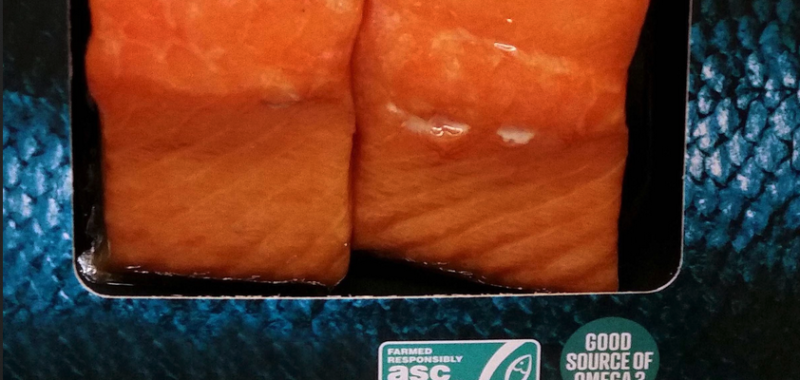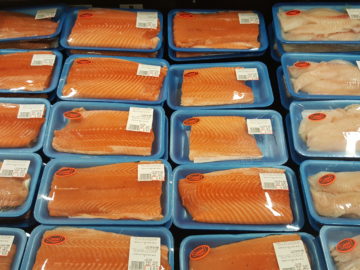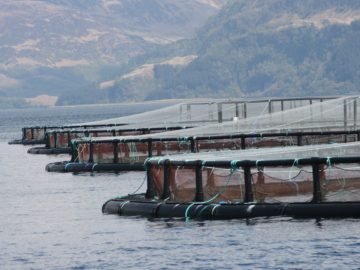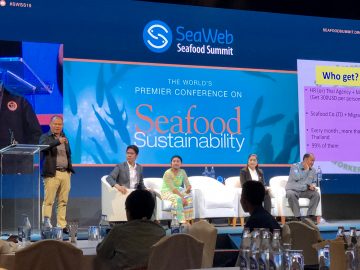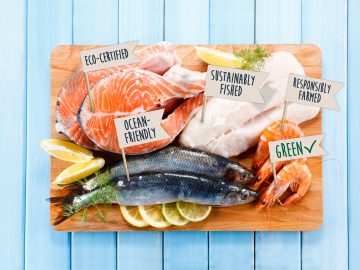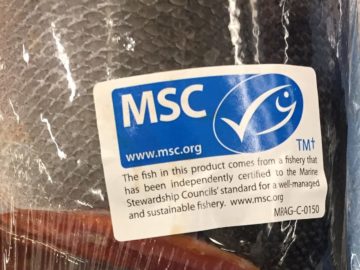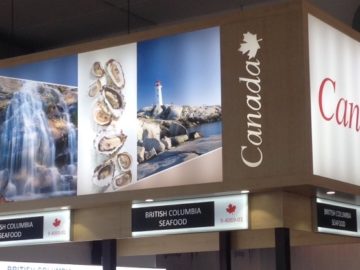Over the last decade or so, you’ve likely noticed an increasing abundance of eco-labels at your local seafood counter. There are now over 30 different seafood eco-labels globally; many of which are for farmed seafood. But what do they mean? Are they really a guarantee of sustainability?
Recently we discussed the notion that all farmed seafood is bad. Spoiler alert, it’s not. However, for some sectors of the aquaculture industry, exponential growth has led to environmental and social challenges. In response to these challenges, eco-labels for farmed seafood have proliferated – to the tune of $3.6 billion U.S. in 2015.
Eco-certifications, when done right, can help drive important sustainability gains. This is why SeaChoice advocates for consumers and retailers to use credible eco-certifications to guide their seafood purchasing decisions. In addition to being able to demonstrate improved environmental performance of eco-certified producers, credible eco-certifications’ practices must be transparent and inclusive, with procedures that are fair, and criteria that are rigorous and upheld.
One of the most prominent farmed seafood eco-certifications is the Aquaculture Stewardship Council’s (ASC) “responsibly farmed” eco-label. Established following a series of multi-stakeholder dialogues, which two SeaChoice member groups were a part of, the ASC Salmon Standard claims to define global best practices for managing environmental and social impacts. Today, 27 per cent of the salmon farming industry by volume and about 11 per cent of the total number of salmon farms certified feature the ASC eco-label.
On a quest to understand how ASC certified salmon farms stack up, SeaChoice conducted a comprehensive global review of all audits (i.e. compliance assessments) filed for each of the 257 certified salmon farms – from the first farm certified in 2014 through to March 15, 2018. Our analysis included all major Atlantic salmon farming regions, including Australia, Canada, Chile, Norway and Scotland.
Our review highlighted some good news. We found that most ASC certified farms were successful at meeting several key environmental indicators of the Salmon Standard such as fish feed ratios, chemical treatments, escapes and lethal incidents involving marine mammals.
But it also uncovered some worrying trends, including that changes to the auditing processes and the Standard are eroding the best practices codified in the Standard. This means that consumers and retailers can’t tell exactly how ‘responsible’ the products with the ASC logo really are.
For example, the Salmon Standard asserts that farms “must meet 100 per cent of the [Standard] requirements” in order to be certified. This is an impressive claim that instills trust in consumers interested in making environmentally and socially responsible food choices. However, we found this claim to be misleading given the majority of ASC certified farms don’t actually follow the Standard as written. Take a deeper dive into the report analysis here.
Where eco-certifications are seen as rewarding ‘business as usual’, the opportunity for potential and much needed sustainability gains within the industry are lost. This is why SeaChoice embarked on this global review – to determine if the ASC certification equals ‘best practice’ salmon farms. If not, what improvements should be made to ensure the rigour and credibility of the scheme are upheld?
SeaChoice values the role that eco-certifications can play in improving the sustainability of fisheries and aquaculture. Our intent in carrying out this review, as well as our engagement with other eco-labels such as the MSC, is to recommend actions that eco-labels can take to address deficiencies, maintain the scheme’s credibility and, ultimately, have a positive impact ‘on the water’. In the end, we want to ensure that consumers and retailers buying seafood with these eco-labels are truly supporting industry best practices for sustainability.
